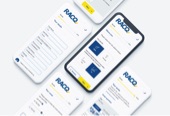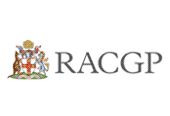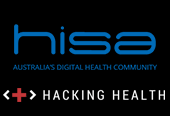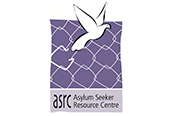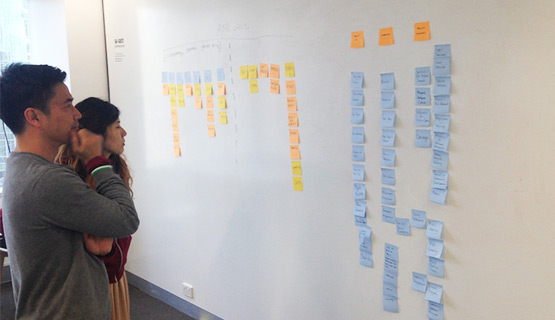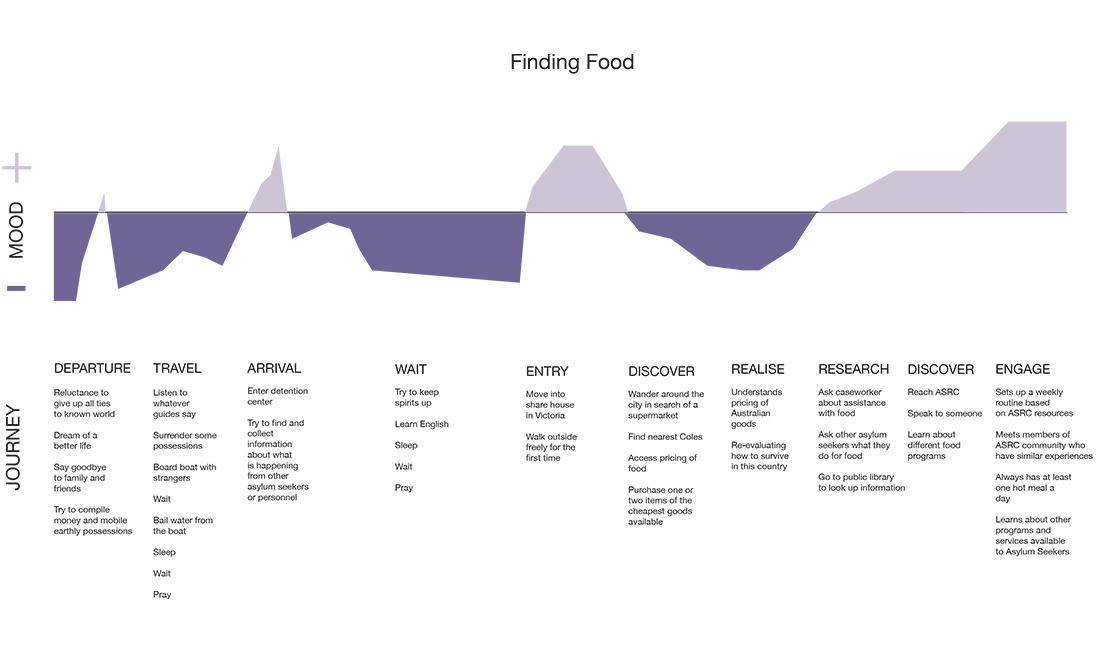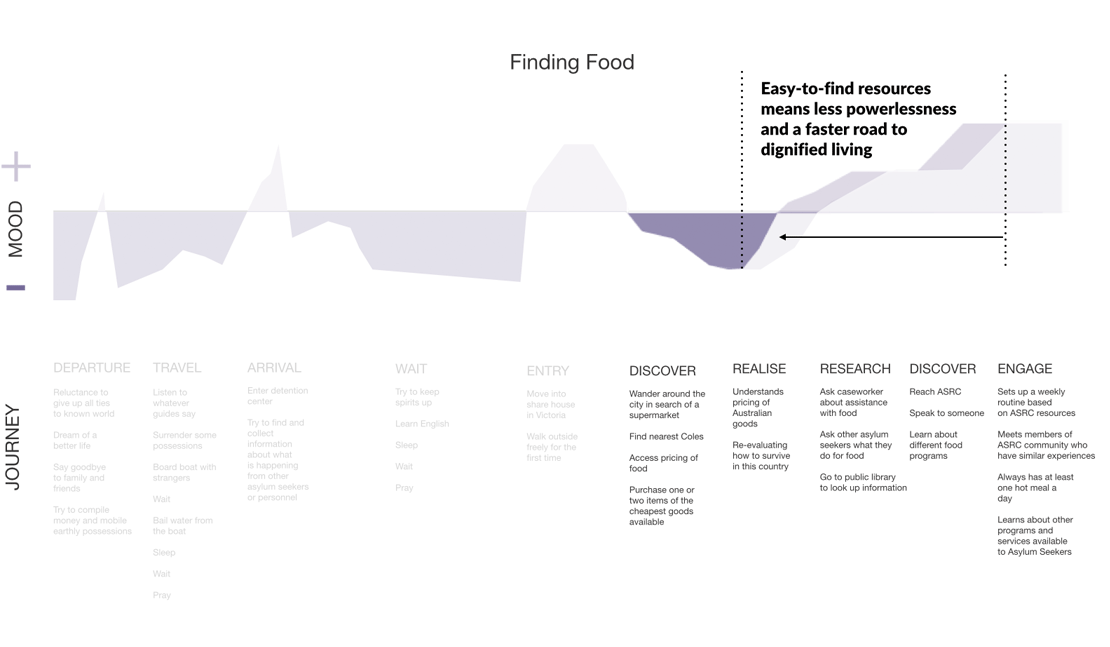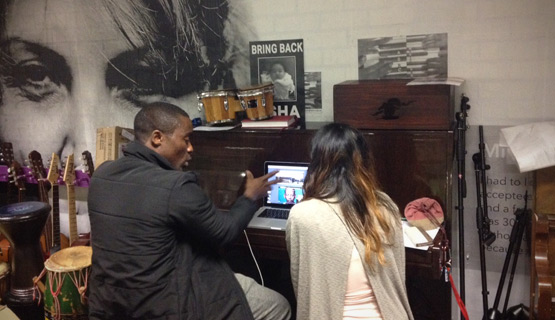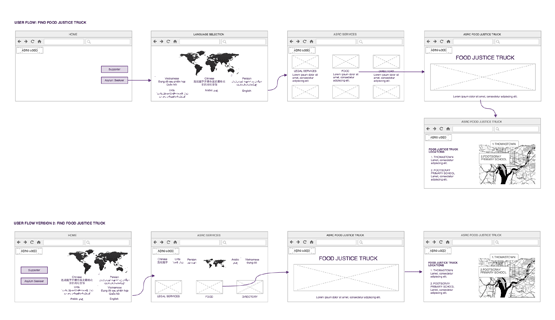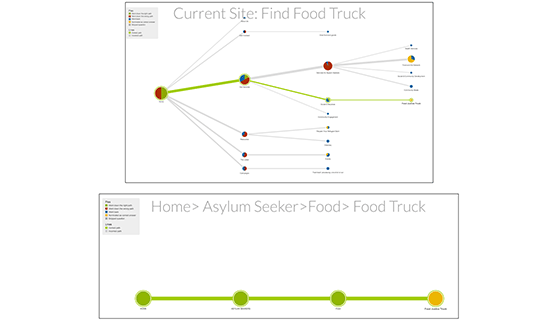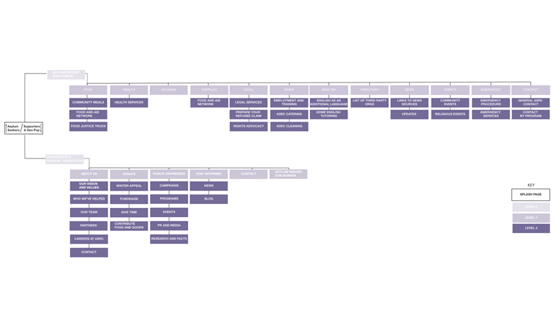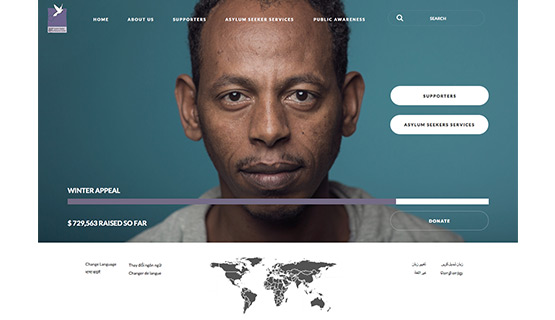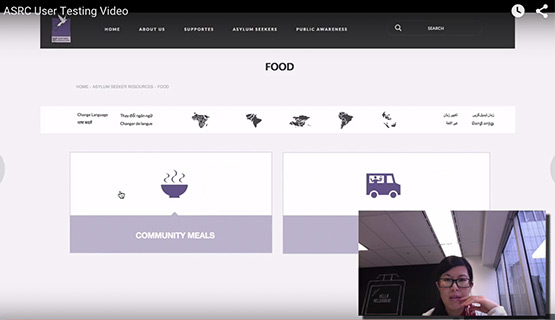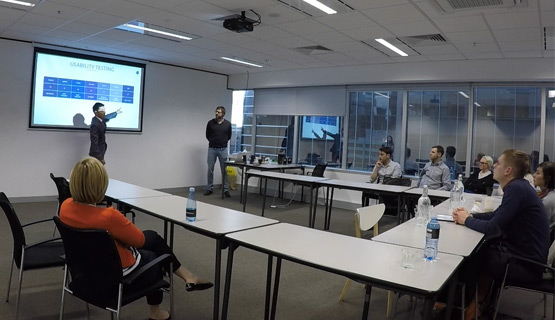ASRC
The Asylum Seeker Resource Centre (ASRC) website can become potentially an important digital resource to asylum seekers and to ASCR members. It can be of most value to these people who are not geographically close to the resource centre, located in city of Melbourne, Victoria, Australia. The centre is already making a huge impact in providing basic necessities like food, training and legal support for its current and past members.
PROCESSES
- Problem & Solution Statement
- User Interviews, Contextual Inquiry
- Affinity Diagramming, Survey Design, Personas
- Customer Journey Mapping
- Scenarios, User Tasks
- Information Architecture
- User Flows, Prototyping
- Usability Testing
APPROACH
THE CHALLENGE
Asylum seekers were not using the ASRC website as it was difficult to find legal information and understand the complex language being used.
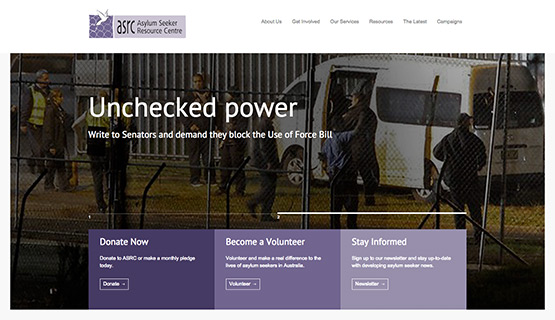

PROBLEM & SOLUTION STATEMENT
We reviewed the project brief and through affinity diagramming, distilled it to its essence.
As User Experience (UX) Designers, we needed to evaluate the context around the organisational brief and clearly identify the pain points to confirm and validate whether the brief addressed actual user problems.
PERSONA DEVELOPMENT
From a combination of online surveys and ASRC member interviews, we created three distinct personas to help provide a parameter to set our user tasks to. These were:
- Find legal helpline
- Find the "Food Justice Truck" time and location.
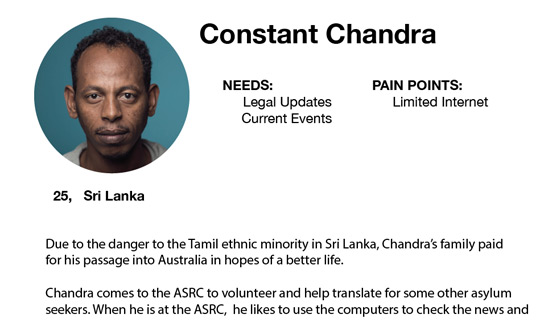

CUSTOMER JOURNEY MAPPING
From these personas, we created a complete journey map to see where their emotional states were over time and touch points. This was then used to help inform the scenarios and specific user tasks for us to test against.
USER INTERVIEWS AND RESEARCH FINDINGS
We went onsite and conducted in-depth contextual interviews about ASRC members' history, behaviour, needs and wants.
ASRC members could not easily find the legal helpline and when they did find a phone number, it was to the resource centre instead of the legal team. Most of them were unsuccessful in finding the next date and location of the food truck.
PROTOTYPING
With insights into the behaviour of our target users and also their understanding of information, language and technical knowledge, we created prototypes to test our research.
The prototype was also created in Vietnamese to test the use of maps and iconography for content navigation. This was to emphasise and replicate the language barriers when we performed usability testing with native english speakers.
USABILITY TESTING AND ITERATION
Usability testing was conducted with 7 participants, representing the age bracket and circumstances identified from user research.
All testing was recorded on video via Screenflow to capture the issues as they arose. Based on this, changes were made to the design and order of content presentation within the next prototype iteration.
KEY OUTCOMES
ASRC were given some quick wins to implement on their site straight away. A language, mapping and SEO plugin was recommended for the current site. Through improved information architecture, research, analysis and prototyping, 100% of users were able to find the food truck as opposed to 10% previously.
A framework for content creation and strategy was provided to cater for an audience that had basic english and technical expertise. With this, ASRC can continue to make a powerful impact with as many asylum seekers and their members as possible.
VIEW FULL REPORT
" We were blown by the level of detail and impressive insights Tung provided to us in auditing the UX requirements of our members.
Having these insights and the knowledge they were acquired through carefully considered research, conducted using some very smart techniques, has given us great confidence going into our new website build. "
Nick Haines
Digital Campaigns Coordinator, Asylum Seeker Resource Centre



